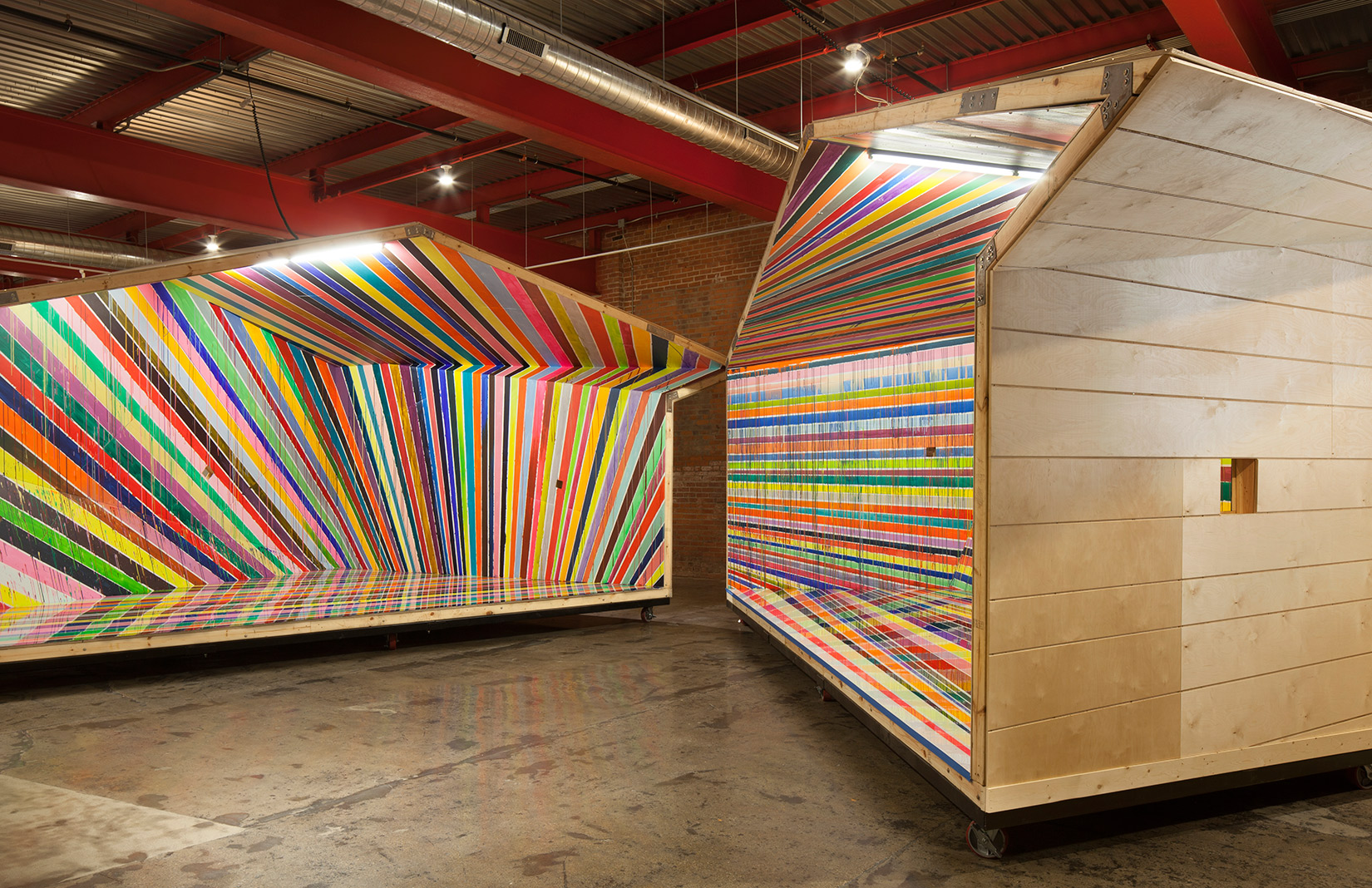
Wasserman Projects takes over a former firehouse in Detroit’s 127-year old Eastern Market
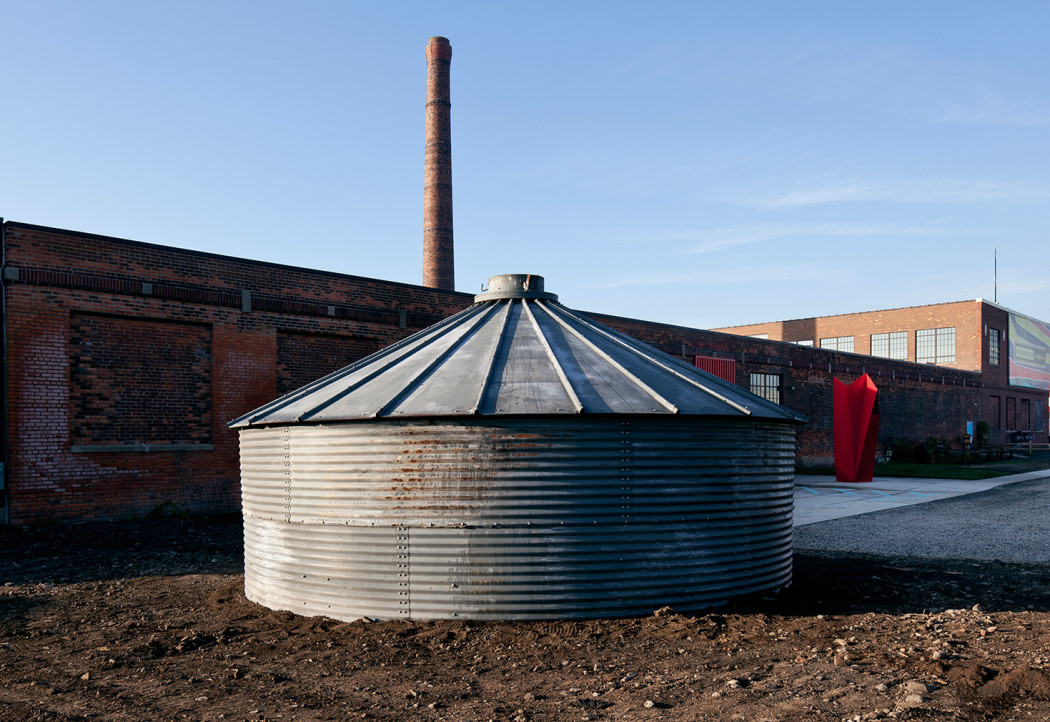
Detroit-based artist Jon Brumit’s outdoor installation includes a sonorous grain silo, lathe-cut loop records, and public radio broadcasts
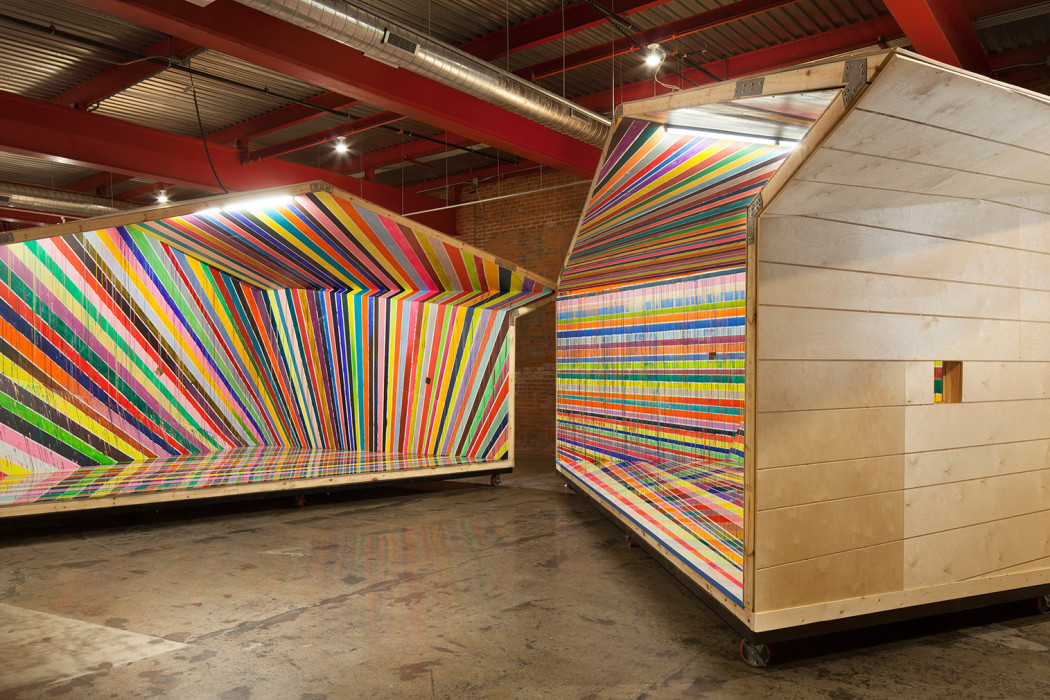
A pavilion designed by Miami Beach-based architect Nick Gelpi, in collaboration with German-born, Brooklyn-based painter Markus Linnenbrink, greets this weekend’s first visitors
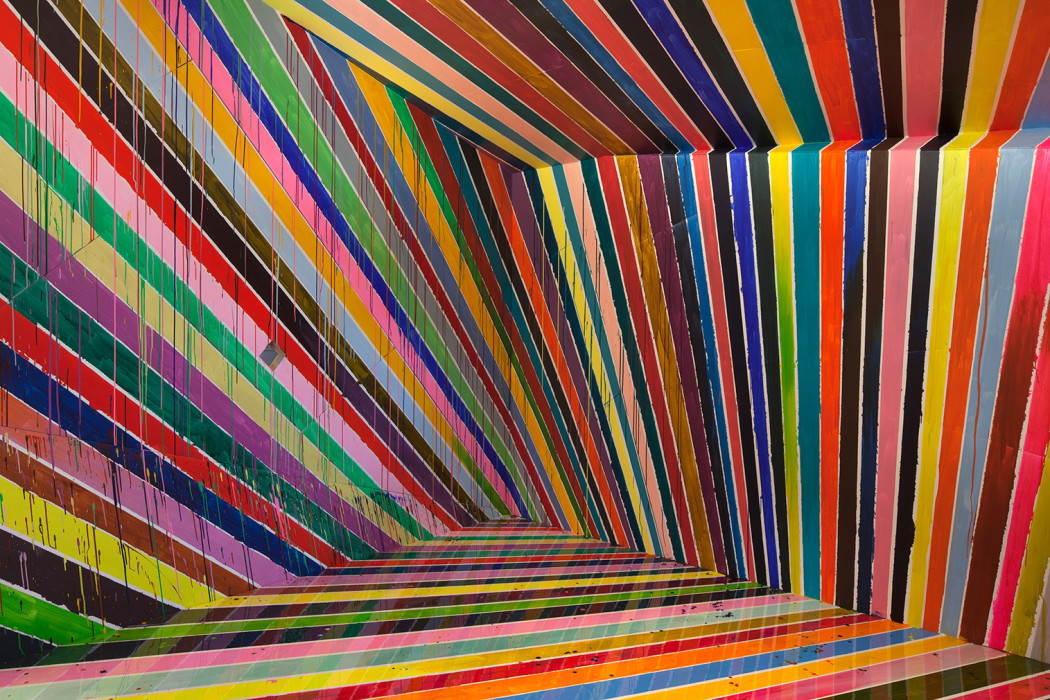
Vibrantly coloured parallel strips run across the walls, ceilings, and floors of this walk-all-over work of art
‘Detroit is such a compelling story right now,’ says Gary Wasserman, introducing his new Wasserman Projects, an interdisciplinary arts space located in a 5,000 sq ft renovated firehouse that opens this evening in the Motor City.
Situated in the Eastern Market district of Detroit – 4.3 acres of fresh produce, specialty foods, art galleries, letter presses, and restaurants – the Wasserman Projects is perfectly timed to contribute to the creative energy that already exists in this burgeoning community.
‘We love the character of the market and wanted to help expand traffic,’ says Wasserman, a philanthropist and self-identified ‘cultural producer’, who grew up in Detroit and two years ago opened a gallery just outside the city.
With this project, however, Wasserman hopes to support a broad range of large-scale interactive pieces. ‘His commercial gallery is about buying and selling art. Gary wanted this project, which is a non-profit, to be more about supporting artists through programming,’ says Alison Wong, director of the Wasserman Projects, explaining that they plan to offer contemporary art exhibits, concerts, performances, discussions, and programmes that will promote cross-collaboration and the fostering of new art.
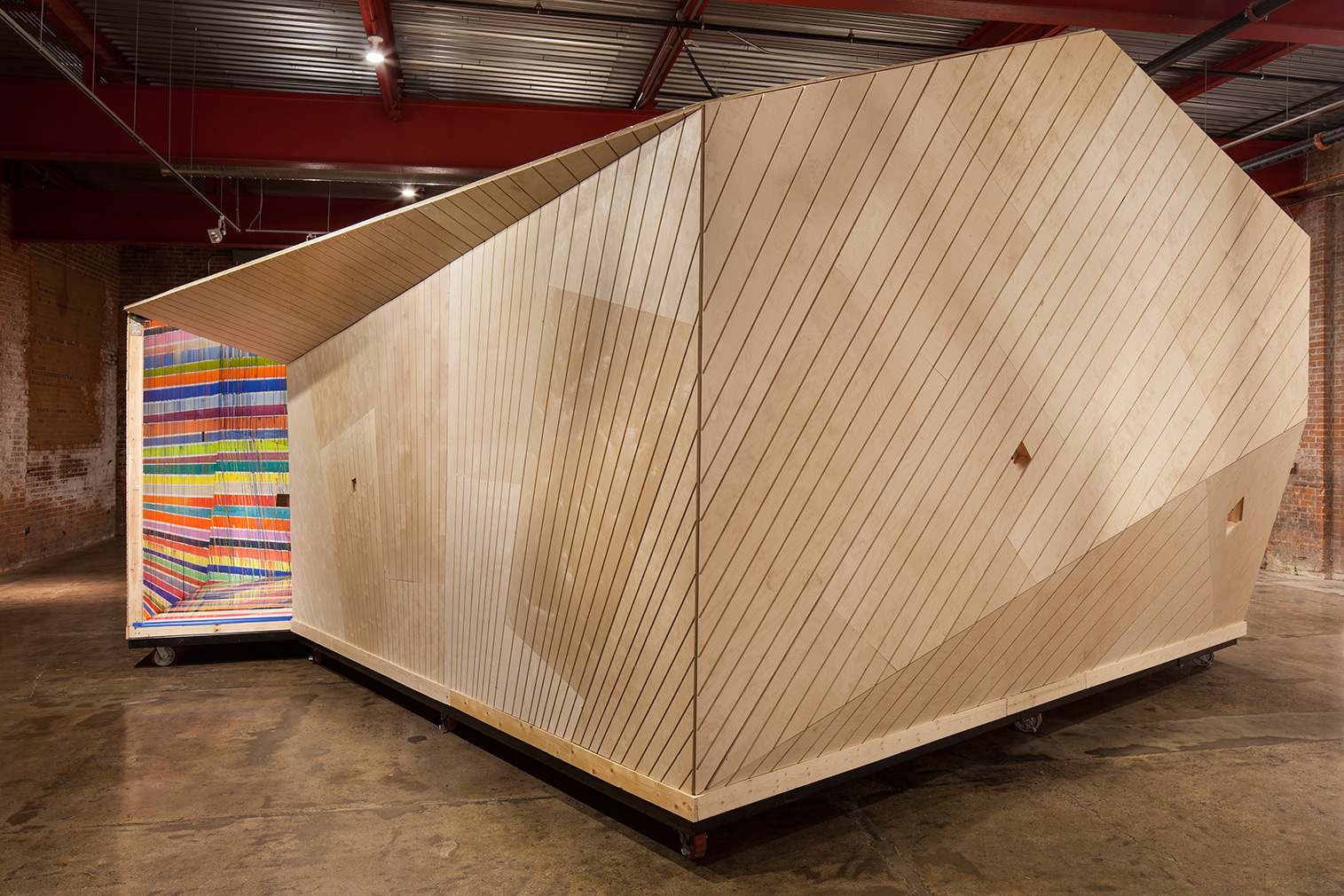
To that end, they needed a large space. When the already vacant firehouse became available last May, they acquired it quickly. And not just because it needed very little done to it, but also because of its location in the 127-year-old market, one of the oldest in the country.
‘The vibrancy and diversity of the market has a lot to do with this project,’ says Wong. ‘Thinking about art it is not just about visual arts, but food and culture and music,’ she explains, adding that the one installation that will be permanent is by the Belgian artist Koen Vanmechelen. His global ‘Cosmopolitan Chicken Project,’ which involves the cross breeding of domestic chickens from different countries as a symbol of global diversity, will open here in September of 2016. They also plan to sell the eggs the chickens produce.
In keeping with Detroit’s legacy, the space still looks very much like a firehouse, with the original bright red ceiling beams framing the structure. The biggest changes are the installation of two bathrooms, allowing the venue to also qualify as a live/work space, and the intense polishing of the pock-marked cement floor.
‘Basically, we kept the bare bones of the structure. The floors speak conceptually to what we think about Detroit,’ Wong explained on a recent tour of the building. ‘We wanted to take the history and life of Detroit and respect and recognise everything that was here before with this space.’
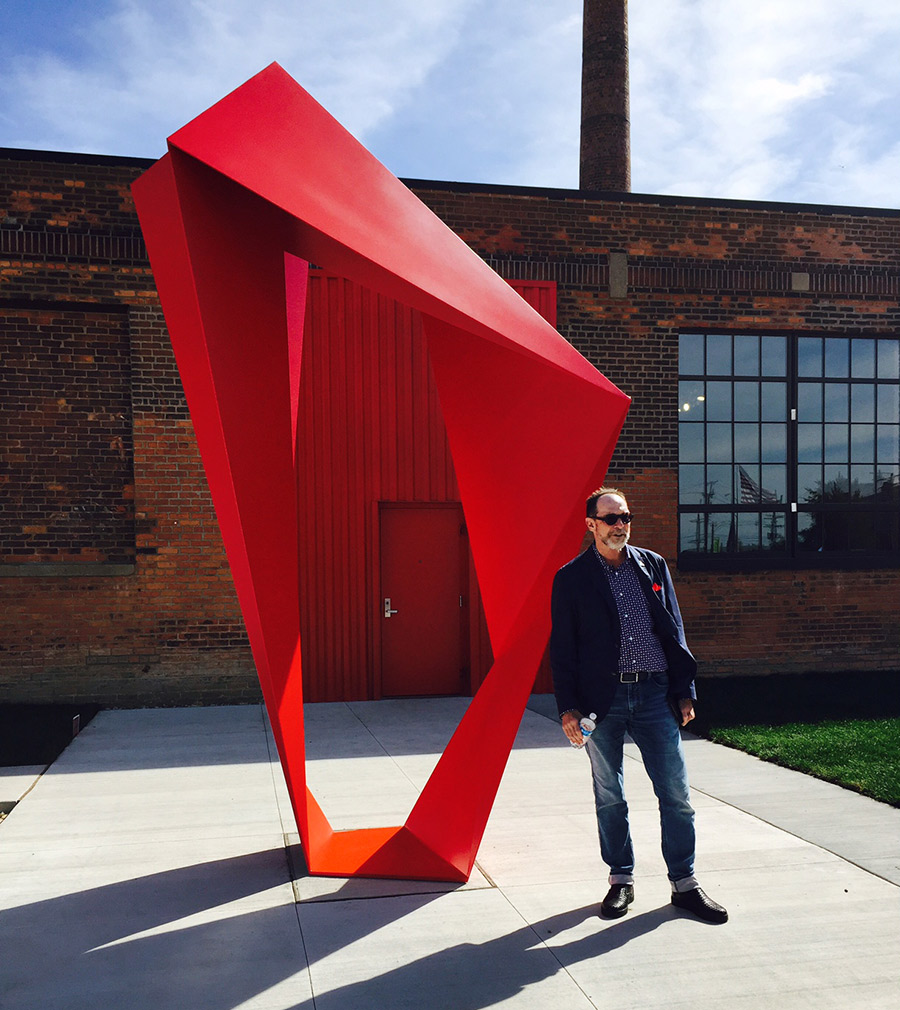
But the outside also needed work. A front entrance had to be created as the building’s current entrance, located in a back parking area, was not pedestrian friendly. It boasts a large sculpture that visitors will have to walk through to enter. And one of the 180kg original windows, all of which had been bricked up over the years, was also restored.
‘We were lucky to find a serviceable space here,’ says Wasserman. ‘It was far less onerous than dealing with a ruined building.’
Their first exhibition will certainly showcase the scale of the building. Two dynamic installations – a pavilion designed by Miami Beach-based architect Nick Gelpi, in collaboration with German-born, Brooklyn-based painter Markus Linnenbrink – will greet this weekend’s first visitors. In addition, Detroit-based artist Jon Brumit will open a large-scale outdoor installation, which includes a sonorous grain silo, lathe-cut loop records, and public radio broadcasts.
‘Eastern Market has a long history of people creating and adapting and repurposing existing spaces. Fixing up this firehouse is a part of that creative process,’ says Brumit. ‘I am just excited to be in the first exhibit. It is a really a big honour. And I like that it won’t cost anyone anything to come into the space and talk to all of us about our work.’




